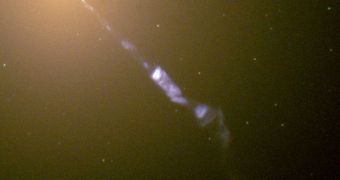Analysis of the basic properties of black holes appears to indicate that some of these dark behemoths may be capable of surviving the destruction of the Universe. If the Cosmos operates in cycles of Big Bangs and Big Crunches, then black holes can theoretically endure the latter events.
In a new study, experts look at how the Universe would evolve if this theory were true. At this point, there's no doubt that the Big Bang is the best suitable method of explaining what happened at the beginning of everything.
What is less clear is whether the Big Crunch theory is also true. What this view says is that the Universe will eventually reach a stage where it will no longer expand. Space will then begin to slowly contract, until everything gets pulled into a black hole-like singularity.
If the Big Bang was produced by such a singularity, then it's easy to see how the cycle could repeat itself anew. The thing that informed experts in speculating that some dark behemoths may withstand the ultimate destructive power of a Big Crunch is the potential existence of primordial black holes.
Such structures have not yet been demonstrated to exist in reality, but they are theoretically possible. Their existence was inferred from the processes experts knew went on shortly after the Big Bang exploded everything into being.
Primordial black holes are different from “regular” ones through the fact that they did not form from the collapse of massive stars during a supernova event. Rather, they were produced from the same material that permeated the Universe fractions of a second after the Big Bang.
But, lately, astrophysicists began to consider the possibility that these objects may have originated before the Big Bang. Queen Mary University of London expert Bernard Carr and Dalhousie University scientist Alan Coley take a closer look at this possibility.
In a new paper, they analyze what may happen in the Universe shortly before a Big Crunch occurs. The study reveals that black holes of a certain mass (a few hundred million kilograms to about a solar mass) could withstand a Big Crunch.
This line of thought raises a problem however, and namely learning how to tell apart primordial black holes from pre-Crunch ones. According to Coley and Carr, once we learn to do this, we will become able to witness the oldest objects that ever where.
All that is needed in order for this to become a reality is for astronomers to succeed in discovering a method of detecting primordial black holes in this Universe, Technology Review reports.

 14 DAY TRIAL //
14 DAY TRIAL //